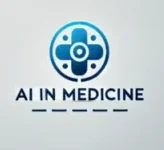
Writing a thoughtful, well-crafted letter of recommendation (LOR) is one of the many academic responsibilities that often fall to faculty in medical schools. Whether you’re a physician, a basic science professor, or hold an administrative role in medical education, these letters play a critical role in shaping the careers of students, trainees, and colleagues.
But let’s be honest: crafting a personalized, compelling LOR takes time—something many of us are short on.
Enter generative AI. Tools like ChatGPT and other large language models have opened new doors for academic writing support, including LORs. Used thoughtfully, these technologies can help busy professionals get started, organize ideas, and improve clarity. But using AI in this context also raises important ethical, professional, and privacy considerations—especially within academic medicine.
Let’s explore how to use generative AI to assist with LOR writing responsibly, what to do if you’re not comfortable writing a letter at all, and how to navigate the evolving norms around AI attribution and authorship.
AI as a Writing Assistant—Not a Ghostwriter
Generative AI can help transform a few bullet points or even a vague idea into a polished paragraph. For time-strapped educators and clinicians, that’s a game-changer. But it’s critical to remember: you are the author of the letter, not the AI.
You should never submit an AI-generated letter without reviewing, editing, and taking full ownership of the final product. AI can help you brainstorm, rephrase, or add structure—but the sentiments and facts should come from your own experience with the candidate.
If you use AI during your drafting process, authorship attribution is a gray area, but transparency is generally encouraged. You might include a line in the letter or in your own records that states: “This letter was drafted with the assistance of generative AI and has been reviewed and approved by the undersigned.” That way, you maintain ethical integrity without over-relying on automation.
Institutional Guidelines and Evolving Norms
Academic institutions vary in their guidance about generative AI. Some have policies requiring disclosure if AI was used in any part of the writing process, while others leave it up to individual judgment. Check with your institution or the program requesting the letter to see if they have an official stance.
Professional organizations, like the AAMC, have yet to release formal rules about AI-generated recommendation letters, but we can expect guidance to evolve. Until then, transparency, accuracy, and honesty remain your north star. (1)
Privacy, Confidentiality, and Data Risks
One major caveat when using AI tools: don’t enter sensitive or identifiable information into public platforms. ChatGPT and similar tools may retain inputs, even if anonymized. If you’re describing a student’s academic performance, exam scores, or personal attributes, that’s protected information.
Instead, use placeholders when drafting. For example:
“This candidate [NAME] demonstrated exceptional problem-solving skills during their anatomy course…”
Once you have a working draft, manually insert any private details, ensuring that nothing identifiable has been shared with the AI.
If you’re using a secure, enterprise-level AI platform with strong data protections, the risks are lower—but the responsibility still rests with you.
What If You’re Not Comfortable Writing the Letter?
Sometimes you may not feel you know the candidate well enough, or you don’t feel you can write a strong letter in good faith. In those cases, it’s better to politely decline rather than write a vague or lukewarm letter—which can do more harm than good.
You can say something like:
“Thank you for thinking of me. I want to make sure your application is supported by someone who can speak more directly to your strengths and experiences.”
If appropriate, you might suggest someone else who knows them better or offer to help in another way.
Two Helpful Prompts to Jumpstart Your Letter
When using generative AI, starting with a strong prompt is key. Here are two that many academic professionals have found helpful:
“Draft a professional letter of recommendation for a medical student who excelled during their neuroscience course. Highlight critical thinking, curiosity, and collaborative work.”
“Help me write a draft of a recommendation letter for a resident applying to a cardiology fellowship. I want to emphasize their leadership on rounds, patient-centered care, and enthusiasm for academic medicine.”
These prompts can produce a solid draft to work from—but again, always revise and personalize before sending.
Final Thoughts: Use AI Thoughtfully, Authentically, and Ethically
Generative AI can be a valuable tool in the academic toolkit, especially for medical school faculty managing heavy clinical, teaching, and administrative loads. It won’t replace your professional insight, mentorship, or judgment—but it can help reduce the writing burden.
The key is to use it responsibly: protect privacy, be transparent, and take ownership of your words. And if you truly don’t feel you can write the letter, it’s okay to say no. In fact, that may be the most ethical decision you make.
Call to Action
As AI becomes increasingly integrated into academic medicine, now is the time to reflect on your own practices. Consider creating a personal or departmental guideline for AI-assisted writing. If you’re exploring how to use tools like ChatGPT for academic support, try experimenting with it—but remember, your professional integrity always comes first.
This blog post was authored by a human, with assistance from ChatGPT in structuring and refining content.
1. Hostetter, L., Kelm, D. and Nelson, D., 2024. Ethics of writing personal statements and letters of recommendations with large language models. ATS scholar, 5(4), pp.486-491.
